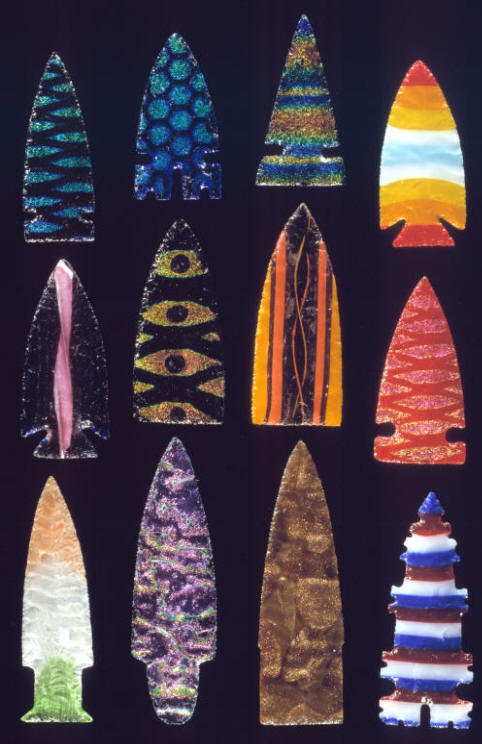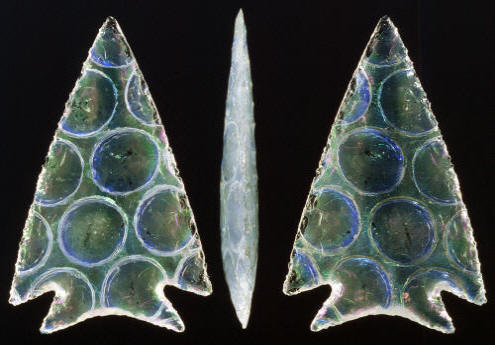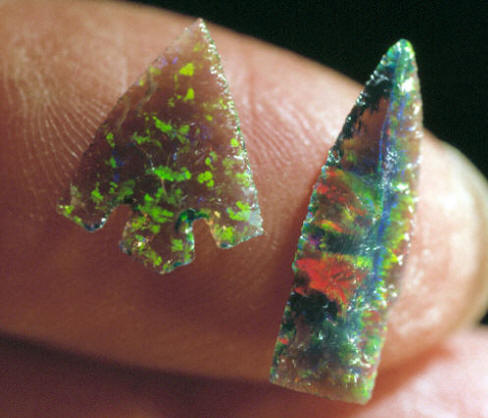|
||
|
||
|
"Like Damascus steel, mixing or folding together the metal, he (James Howell) is making and controlling the pattern of the material (glass) before he flakes it."---------2007, by D.C. Waldorf, senior editor of "Chips, The Flintknapper's Publication," (personal communication). "He (James Howell) makes the best glass blanks for knapping in the world."---------2007, Dane Martin, co-editor of "Chips, The Flintknapper's Publication," (personal communication). "Glass is largely made from quartz sand----you can consider it a manmade silicious rock."---------1994, John C. Whittaker, "Flintknapping, Making and Understanding Stone Tools," p. 67.
Many artists develop their own special niche or technique that's easy to recognize. James Howell's glass points are unique in that way. He's developed his own style of blending together different types of art glass that produces a circus of colors. His finished points are greatly enhanced by his ability to control the material he flakes. |
||
|
James Howell uses several different kinds of glass to form his blanks from which he knaps his points. He uses Venetian millefiori glass beads, Venitian glass rods, copper gold stone, dichroic glass, fiber optic and any other type of glass that offers a good effect or color. |
||
|
Man-made glass is the easiest material to flake. It's made from quartz sand and because of its purity and rapid cooling it has no crystalline structure. Many knappers got started making their points with glass. |
||
|
||
|
Most flintknapping is done with natural stone that the craftsman selects for quality and color. Glass is the only flintknapping material that can be manipulated to form any pattern or color. D.C. Waldorf commented that, "Like Damascus steel, mixing or folding together the metal, he (James Howell) is making and controlling the pattern of the material (glass) before he flakes it." So the material itself is a product of the artist which greatly enhances the finished point. |
||
| CONTINUE ON TO PAGE TWO | ||
|
"REFERENCES"
1994,
Whittaker, John C., "Flintknapping, Making and Understanding Stone
Tools,"
p. 67. |
||




